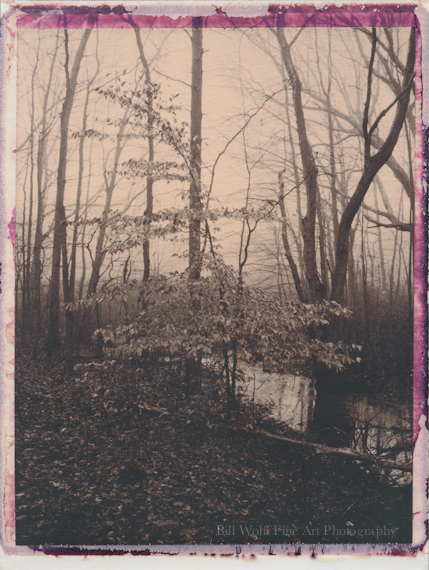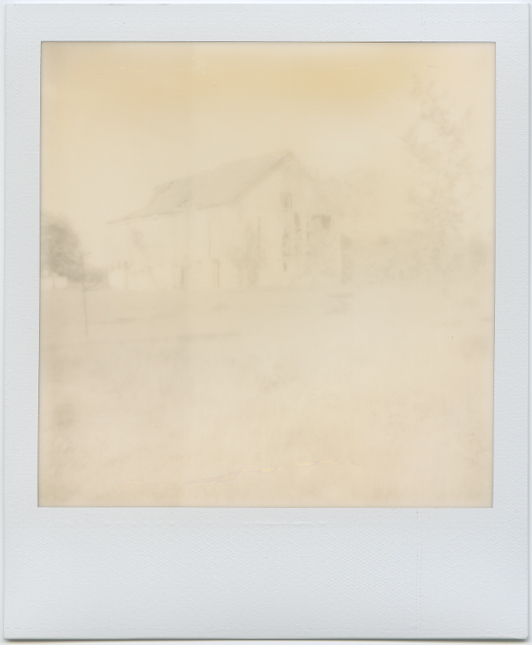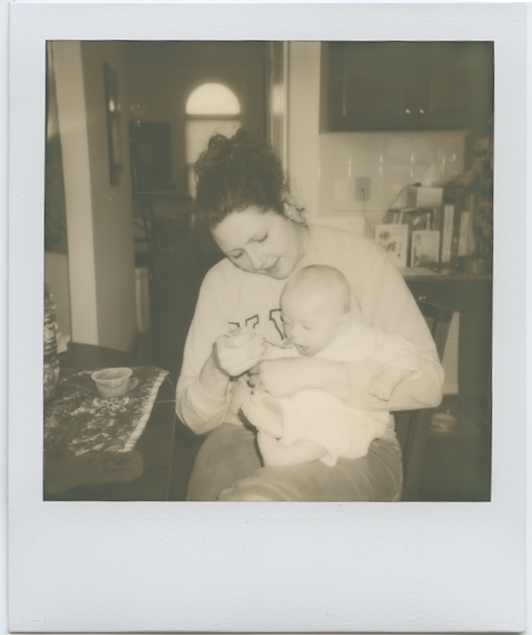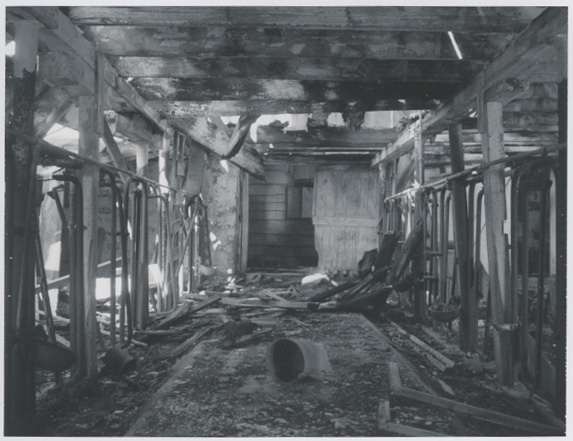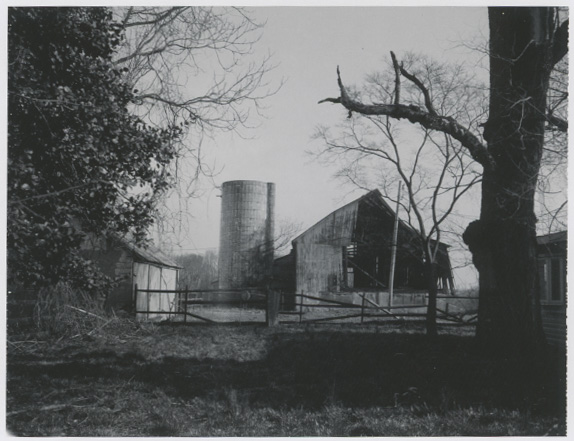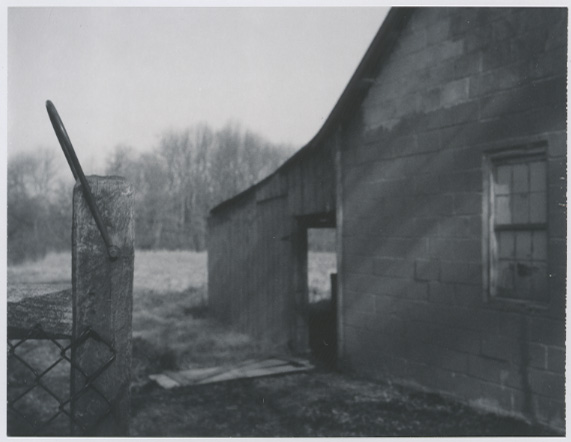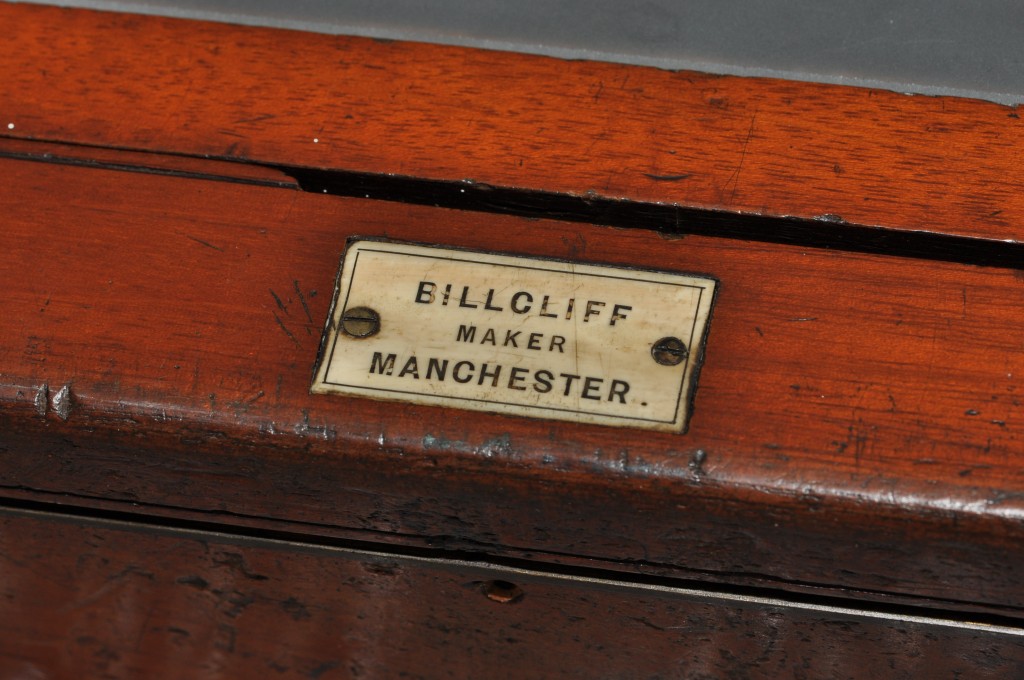blog
Creative Compositing Photography Workshop: A Review
July 03, 2012
The Basics
The Workshop: Creative Compositing: The Impressionistic Photograph
The School: Rocky Mountain School of Photography
The Instructor: Mark S. Johnson, Photoshop Guru and author of the beautiful and insightful Botanical Dreaming: Using Photoshop, Your Camera, and Your Heart to Create Inspiring Images
Assistant: Roxanne Duffy
Location: Boulder, Colorado
Dates: June 16 – 22, 2012
In Attendance: 12
Overview
For my 40th birthday this past January, my wife, Wendy, bought me a spot in the Rocky Mountain School of Photography’s workshop, Creative Compositing: The Impressionistic Photograph. Taught in Boulder, CO, by Mark S. Johnson, the workshop description reads:
If you are looking for a photographic experience to expand your vision and snap you out of your current way of seeing, this workshop is it. Through a combination of supportive photo evaluations and field shoots, Mark not only teaches macro photography, creative motion techniques and how to use multiple exposure, but he also rolls out the red carpet for you to explore your artistic side. Using Photoshop, he helps you to create impressionistic images that incorporate various montaging techniques, painterly effects, and HDR (high dynamic range). He fosters a supportive environment that encourages participants to help each other grow technically and creatively. Group critiques help bring into focus the lessons presented throughout the week and solidify your learning experience.
I suspect Wendy purchased this workshop because of the location (we both love Colorado and I’d never been to Boulder), the dates (I’m not teaching in the summer so I have time to spend away), and the description to “expand your vision” because I’m always trying to do that with my images. I also suspected that she might have picked up on the Impressionistic part of the title, as I have been working on an impressionistic series using Polaroid Chocolate film (and some in my Lum’s Pond series, as well).
I was, of course, very excited to receive such a wonderful gift, but I admit that I was a bit hesitant and more than a little nervous because most of my photography work lately has been with film. I also had no idea what “compositing” was and had what turned out to be uninformed ideas about HDR. Though I use Photoshop for touching up photos (mostly dust removal) and use some its other features, I’ve never been one who enjoys spending too much time there. My recent philosophy has been to record what I can through the viewfinder, avoid having to crop at all, and use Photoshop and Lightroom for only the most minor of edits that could have been accomplished in a darkroom, as well as dust removal. In that philosophy, Photoshop and Lightroom tend to be begrudgingly used accessories to the photographic process not a natural extension of the camera. Film photographers see (or, saw) the darkroom as the natural extension of the camera—the space where what was on the negative was made to appear on paper in a form that approximated as close as they could what they envisioned when pressing the shutter.
After completing the workshop, I understand how Photoshop and Lightroom (and Photomatix and the host of web sites that offer free textures and actions) can be considered in a similar way—and not just because of the phrase “digital darkroom” (which wasn’t used at all) but because digital photography affords different possibilities than does film, and Photoshop is a direct part of affording those possibilities. One makes creatively composited digital images with a mind toward post-processing in Photoshop. Recording the image in the DSLR is merely the first step in a long process of composing the image into something new.
The Instructor and the Course
To say that Mark Johnson is a wonderful instructor would putting it too lightly. He is , simply, incredible. His ability to recall the functions of Photoshop, Lightroom, Photomatix, and other applications was something to behold (and this is coming from someone who teaches instructional technologies at the college level). He has boundless energy and his enthusiasm for the creative processes that make up creative compositing was infectious. We all felt it and fed off of it. And even more importantly, he decided long ago that sharing his knowledge with those on the web—for free—was of utmost importance. I encourage anyone reading this to spend time on his web site and take in his Photoshop Workshop series, which has easy to understand video tutorials of just about everything you could ever want to know about Photoshop. They are free if you view them online and also available in DVD format. His book, Botanical Dreaming, which is part artwork, part macro photography technique, part inspiration, part life lesson, is 100% worth the cost, so I also recommend that to you. I’ve yet to read his other books, though I do have his HDR ebook.
| Tags: boulder, colorado, creative compositing, filters, garden, hdr, lensrentals, mark johnson, nikon, oil paint, photomatix, photoshop, photoshop actions, private garden, review, rocky mountain school of photography, roxanne duffy, wide angle, workshop
Foggy Morning Polaroid Photos at Lums Pond State Park
March 18, 2012
This weekend the fog came in thick both mornings and stayed for hours (today until around 10:30). Wendy was off so I was able to get out with the Polaroid and make some photos in the fog. Now that the barn has been razed, I’m no longer photographing it, and I exhibited some images at Colourworks, I have decided to focus my attention on Lums Pond State Park for the time being. The reasons are many: it is beautiful during all seasons, it has an incredibly diverse ecosystem surrounding the pond, it is 5 minutes away, Wendy has a strong connection with it as she has been kayaking there for many years, and I really enjoy walking Hydan and riding (with Hydan soon) its many paths.
It’s been a while since I’ve taken out the Polaroid. Now that the Chocolate film is sold out on the Impossible Project web site (something I attribute to this video of a The Decemberists “Down by the Water” which, though I love the song, used 1000s of images) the film is extremely hard to come by and I’m getting stingy with the 30 packs I have left. I used 3 packs this weekend. The first pack (used Saturday) worked great up to image 6 and then mis-pulled and the rest got misaligned. The first pack on Sunday was a concern out of the box. Usually the packs have a nice amount of air in them. This one was as if it has been shrink-wrapped; no air at all. Sure enough, the black cover paper was very hard to pull out and the first tab broke off, as did the second, and third. Rather than fight it, I switched packs. The next pack worked perfectly (as most of them do), and because of my stinginess I passed-up many shots and there are two exposures left.
The conditions for the photos were essentially the same: morning, foggy, 50 or so degrees, and I developed the film for 55 seconds. They are all unedited. I’m starting to keep the paper attached to the images and on Saturday I had some goop issues. I didn’t have anything to wipe the goop off with. Sunday was much better as I had a paper towel. Still, the moisture in the air resulted in the images taking longer to dry, which let to a few sticking together.
The first four were made on Saturday, March 17, and the rest Sunday, March 18. You can also see them in my Lums Pond Flickr set. Enjoy!
These last two images teach me that I can get closer to subjects than the viewfinder suggests. A beauty of photography is that every shoot teaches me something.
Comments (1) | Tags: chocolate, flickr, fog, landscape, lums pond state park, polaroid, polaroid 250, tress, water
3 of 366. 3 January 2012. G is for Grading.
January 03, 2012
 3 of 366
3 of 366
iPhone 4 Camera
Camera+ App with various effects edits
2 January 2012
One might wonder why the Y is in focus and the G out of focus.
After a day of grading 20+ essays, like I did today, I tend to feel G-like: a little out of focus myself, wondering why (Y) I spent the whole day inside (and not, say, out taking photos with my Polaroids).
| Tags: Camera+ app, grading, iPhone, january, keyboard, letters
2 of 366. 2 January 2012. Hydan
January 02, 2012
2 of 366
Polaroid Looney Tunes Taz Camera
Impossible Project PX 600 Black Frame Silver Shade
2 January 2012
| Tags: black frame, hydan, january, polaroid, polaroid looney tunes taz camera, px 600, silver shade
1 of 366. 1 January 2012. Amy.

1 of 366
Polaroid Spectra SE
Impossible Project PZ 680 Color Shade
1 January 2012
| Tags: impossible project, polaroid, polaroid spectra se, PZ 680 Color Shade
Photos of My Opening at Colourworks
October 08, 2011
This month I have the great opportunity to have a photo show, “2335 McCoy Road. An Epitaph. A Celebration.” in the gallery space at Colourworks, the awesome Wilmington developing, printing, and framing shop run by Eric Russell and Gerry Piotrowski. Last night was the opening as part of Wilmington’s October first Friday Art on the Town and there was a great turnout of 50 – 60 people. Thanks to everyone who came out!
Here are some photos. The first is a panorama made with my iPhone. Then one of Hydan. The others depict the images as you move around the gallery space from left to right:
| Tags: art on the town, brownie, canon, colourworks, holga, hydan, panorama, polaroid, wilmington
Call for Artists, Photogs, & Writers: 5 Books, 5 Charities, 5 Ways to Help!
October 07, 2011
Composing with Images Press, the press that I co-founded with Billie Hara, has released it’s latest call for entries. Take a look and consider submitting. If you have any questions, please let me know!
Composing with Images Press (CWiP) seeks images (photographs, drawings, or paintings), poetry, prose, and personal experiences (stories, letters, or journal entries) that explore and/or represent 5 different themes to create 5 different multi-genre books to benefit 5 charities. The charities and themes are:
- Children’s Defense Fund (theme: I have a Voice)
- Gay, Lesbian and Straight Education Network (theme: The Teenage Experience)
- March of Dimes (theme: Motherhood)
- Operation Homefront (theme: Heroes)
- Wildlife Conservation Society (theme: Wild)
The books created in response to this call will compose the first 5 books in our Student Books Series. In the Student Books Series students at colleges and universities under the guidance of their instructors and in collaboration with CWiP, will conceive of, design, and edit books to benefit a charity of their choosing. As with all CWiP books, 100% of the proceeds from book sales and submission fees will be donated to the students’ charity. The charities and themes for the first 5 books were selected by Writing Arts majors in Bill Wolff’s Writing, Research, and Technology course at Rowan University.
Deadline for submissions: October 17, 2011, at 11:59pm, Eastern Time.
Composing with Images Press is a small not-for-profit, all volunteer, independent book publisher founded by Bill Wolff and Billie Hara. CWiP publishes photo and art books that bring together image and text to engage creative, social, and cultural issues within a particular theme. 100% of all proceeds are donated to charity. Our first books were immediate best sellers and raised almost $1000 for BP oil spill cleanup efforts. Play!, a book to benefit The Marine Toys for Tots Foundation, will be released in November, 2011.
You will find a summary of each call below. Follow the links to the full call and submission specifics.
We look forward to your submissions! continue…
| Tags: books, call for entries, charity, cwip
Polaroid Now Showing in Lewes and Rehobeth, DE
September 28, 2011
“Afternoon Storm”
September 1 – September 15, 2011
Packard Reath Gallery
Lewes, DE
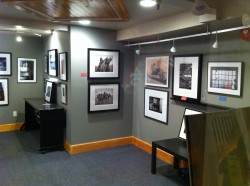
&
September 17 – September 30, 2011
Gallery 50
Gallery 50, Rehobeth, DE
As part of Photomonth 2011 (advanced skills category), a show juried by:
Lee Wayne Mills
Ellen Elms Notar
John Burger
Dinah Reath
Jay Pastore
$600
June 19, 2011
26″ x 20¼”
Polaroid 250 Land Camera
Expired Polaroid 100 Chocolate Giambarba Peel Apart Film
Enlarged and printed on
Hahnemühle William Turner 308gsm Paper
Museum Mount
Limited Edition 1 / 5
The only editing done on the photo was dust removal using Photoshop CS5. All colors match the original Polaroid.
15% of all proceeds will be donated to a local preservation society.
| Tags: lewes, polaroid, rehobeth, show
razing the barn — part 1
May 29, 2011
On Saturday, May 21, 2011, beginning at 3:00 in the afternoon, the barn at 2335 McCoy Road was razed. This is part 1 in a 2 part post about the razing and details the events photographed with my Polaroid 250 Land Camera using Polaroid 100 Chocolate Giambarba Expired (10/2009 if I’m correct).
Construction Unlimited, the owners of the barn and the property around it, had been planning on razing the barn for weeks. But, delays and then a week of rain had out it off. Finally, the day was set. Unfortunately, they decided the barn would be razed in the afternoon, which meant that all the gorgeous morning light that hits the eastern facing front of the barn would be lost. I had no idea, really, how the Polaroid 250 and Chocolate film would handle the strong sunlight. At 2:30, after a morning of putting together new deck furniture, I hurried over to the barn to see what was going on. They were just getting started attaching a rope to one of the inner rafters. The rope would then be attached to a bulldozer. I quickly set up two cameras, the Polaroid 250 and my Nikon D90, on two tripods and the Flip video camera on a third tripod. Thankfully they decided to start by pulling the rafter in to the south which meant that the sunlight was slightly behind me and I would also set up the cameras in the share of a tree. Anticipating a dramatic crash at any moment, I have way too many photos that look something like the below image. I chose this one because it seems like the earth mover is in the process of bowing in deference to the barn. And, indeed, the barn won this round: the rope snapped in half without the barn even budging (Barn 1 – Machine 0).
We then shifted to the eastern face of the barn. I started to become much more conservative in pressing the shutter, especially because they tied the rope to some metal dangling off the wall (if you look closely just below center you can see the rope draping into the grass). The result: the metal was pulled off; the barn didn’t budge (Barn 2 – Machine 0).
Next, they sent an employee to get some chains and we switched back to the southern face. While waiting for the chains, they thought that attacking the barn with the earth mover would work. They splintered off a (massive) beam (Barn 3 – Machine 0).
With the chains attached, the barn started to lose ground—though the earth mover struggled. It was incredible to watch 200+ year old construction resist the earth mover—especially because we knew the new construction across the street would have toppled with just the rope attached. It was also, quite sad (Barn 3 – Machine 1).
We then shifted to the north face and it was here that I got quite worried about the photos. I was now facing into the sun and I had no idea how the Polaroid 250 would handle it. Worried the photo would be completely blown out, I made a slight adjustment on the brightness wheel to darker. I’m pleased with the darker colors and really likethe lens flare in the bottom left corner. After some planning, they attached the chains to the north-east support beam (Barn 3 – Machine 2):
The moment the barn fell with great destruction was completely chaotic. I had just set up the cameras in a new location so I could get the barn and the earth mover in the frame. I was still getting ready when all of a sudden the earth mover was moving. I was cocking the level, snapping the shutter, pulling the paper, and pulling the photo through the rollers in a frenzy, while simultaneously trying to hold the shutter down on the D90 (my wireless remote shutter was not working—must get wired one immediately). This photo, which has an unfortunate dark area, succinctly captures the chaos. It is slightly out of focus, has tons of movement, and may even be a double exposure (if possible on the 250) (Barn 3 – Machine 3):
And here, the final shot in that pack of film, is the barn partially razed. When in the field I usually peel the goopy border off the photo immediately, but I knew it was my last shot so I decided to keep it on:
In Part 2 of this series, I will detail the rest of the razing as documented with my Canon AE-1.
| Tags: 2335 mccoy, barn, building, destruction, earth mover, farm, landscape, polaroid, polaroid 250, rural decay
photographing 2335 mccoy in the rain: one soggy experience
May 19, 2011
This has been a week of waiting and disappointments. The weather has predicted thunderstorms with 70-80% chance of precipitation all week. A gift of a week for someone who wants to photograph in the rain. And, yet, every day that Wendy has been home from work (so she can watch Hydan when I go out to photograph), the clouds would roll in, and as I watched them approach Bear, DE, on weather.com a giant hole would form right over Bear. Rain to the north, south, east, and west. Twice I drove out and sat in the back of my Prius, hatch open, back seats down, camera on tripod pointing at the barn at 2335 McCoy when the weather said 100% chance of rain. Maybe a drizzle for 5 minutes. Yesterday when the rain didn’t come I spent an hour or so testing new Impossible Project film.
So, today, after so much disappointment and curses to the rain gods, I didn’t even think about photographing the barn in the rain. I got up, scanned in my images from yesterday’s shoot, ate breakfast with Wendy, composed a long blog post, ate lunch with Wendy, and then went outside to work on the raised bed garden we’re making. Not 10 minutes in to the gardening and I hear thunder. What a tease, I thought. Then a bit of lightening and some more thunder. I looked at the weather app on my iPhone and lo and behold another storm approaching.
Because I hadn’t been thinking about it, I wasn’t prepared, so I ran—covered in mud, I must say, from the gardening—to get my cameras, tripods, and film, and hurried over to 2335 McCoy. I parked the car, opened the hatch, and started setting up the cameras. I still had Polaroid 100 Chocolate Giambarba Expired in the 250 Land Camera, which I was planning on using. But where was the other pack? And the Polaroid 644 Twin Giambarba Expired pack? I called Wendy. I left it sitting in the garage. The rain was starting. While she packed Hydan into the car and drove the film over, I took a meter reading and loaded a Holga with 100 speed film and taped it with gaffer’s tape. Wendy arrived with the film just as the rain was getting going. The sky darkened. Wendy left. I took another reading. Damn! I loaded my other Holga with 400 speed film and wrapped it with gaffer’s tape. I set up the travel tripod with the 250 Land Camera, got in the hatch, and waited for the real rains to come. As the rain got heavier I made a few images with the 250 Land Camera and was so frantic to not miss the full storm I forgot that I had one last picture left in the pack when I opened it to load another pack of Chocolate. (I did, however, pause and check to make sure the rollers were clean.) Still heavy rain, but not the real downpour I knew I would need if I were to capture any rain and water running off the roof with the Chocolate film. So, I grabbed the Holga with the 400 film, set it on Cloudy, and rain out into the rain. I must have looked like a maniac to the contractors working on other buildings on the lot. It was my Holga waist level modified by Randy at Holgamods and has a UV filter attached to it, so the filter was getting very wet. I, in just shorts, t-shirt, and baseball cap, was drenched, as well. But, I convinced myself that rubbing my wet shirt on the filter would get enough drops off of it to make a good photo. Midway through, however, winding got very difficult. Then extremely difficult. (I knew something was very wrong and when I opened it later I saw that the film had for some reason rolled at an angle and was crunched and loose on the spool. I hid it in darkness and then wrapped it in aluminum foil. We’ll see how that turns out.) But, when all 12 shots were taken, I got back to the car and a minute later the skies really opened up. I got the 250 Land Camera in front of me, dried it off a bit, and was able to take one photograph before the torrent slowed. And, I tell ya, getting all soggied was well worth it, as the photo captured the rain and water running off the roof—the one thing I really wanted:
It may be hard to see here, but I just printed a version of the image on 13 x 19 paper and, wow, it looks great. Here are before, during, and after images:
All my equipment survived intact and none of the film got wet. So, all in all a great experience.
| Tags: 2335 mccoy, barn, delaware, polaroid 250, rain, roof, silo, storm, water
testing the impossible project px 600 and 100 silver shade films
Since the barn at 2335 McCoy Road was not knocked down two weeks ago as had been planned (demolition is now scheduled for this coming weekend) I took the opportunity to try out two Impossible Project films: PX 600 Silver Shade version 06, which came in a twin pack with the Dry Age Kit, and PX 100 Silver Shade
The PX 600 is being used in a Polaroid Impulse AF that belonged to my paternal grandmother, Toby Wolff, who passed away two years ago at the age of 99 and 1/2. She was an avid Polaroid user and I’m so happy to have her last Polaroid camera, hard black Polaroid case, and many Polaroid photos that she took of the family. The other camera is a Polaroid Pronto! S that belonged to my maternal grandparents, Maurie and Harriet White, who are both in their 90s and still living. The Pronto! was in my grandfather’s camera bag that he gave to me a few years ago along with a Canon AE-1 and a Canon A1 Program. I had no idea that he had the Polaroid and I was happy to find it in a soft beige Polaroid case with the user’s manual and a flash bar.
Because the Impulse AF has a tripod mount, it and PX 600 were the first to be tested. It was May 9, 2011, and though I had read about the film’s sensitivity to temperature, that it has to be used between 63 and 77 degrees, I was brazen and brought it out on a crisp, cool, color-saturated morning in the upper 50s, while I was photographing the barn with Fuji 100 color peel apart film on my Polaroid 150 Land camera. The results:
Developed in the shade at around 60 degrees F.
Developed in the sun at around 60 degrees F.
I knew after seeing these images that the temperature was the most likely culprit, but I was worried about the vertical striations in the second image. So I could be sure that the camera wasn’t broken, I took a photo of my wife feeding my son some organic applesauce. The interior temperature was around 72 degrees F. I was relieved and, in fact, amazed by the color shades and crispness in the result:
Before heading out to test the film again, I went back to the The Impossible Project’s PX film optimization page and found The Mijonju Show’s video, “Tricky PX100 films,” which led me to The Mijonju Show’s “PX100 Side by side temperature experiment.” It shows very well how sensitive PX film is to temperature:
After seeing the video I suspected that the striations were the result of me not covering the image fast enough. As a result, using gaffer’s tape I dangled part of a Polaroid Chocolate film box from the front of the camera so when the image would come out the Impulse it would be covered.
On the evening of May 12, 2011, when it was about 72 degrees outside with a bright sunset, I went for my second test of the 600 film. A sample of the results:
Though I was very happy the images were appearing with more consistency, and the darker tones suggested I was covering the images better as I got used to the process, I wasn’t pleased that the striations were still appearing. The third photo also looked like it has some lens flare in the center right. The only thing I thought that could be causing the striations and lens flare was that the ever so brief moment that the sun hit the image as it came out of the camera. If I had realized this sooner I would have taken my umbrella out of the car and used it as a lens shade, but, alas I didn’t.
Yesterday evening, May 19, 2011, with thick clouds overhead and a nice 68 degrees F, I tried again. Instead of using my hand to cover the film as I moved it from the camera to the Tupperware container I was using to hold the film as it developed, I used an inverted and then folded up a box that once held Polaroid 664 Twin Giambarba Expired film. As soon as the photo was out of the camera and under the cardboard flap that was dangling from the camera, with my left hand I slid the image out and under the folded box. I then rushed the photo to the Tupperware container (which, I must add, I wrapped with black Gaffer’s take so no light would get in through the bottom and sides). I also used the folded box to keep the dangling cardboard down and put pressure on one side of it so light couldn’t get in from the side; the other side I covered with my left hand immediately after pressing the shutter. Here are the results in the order the images were taken:
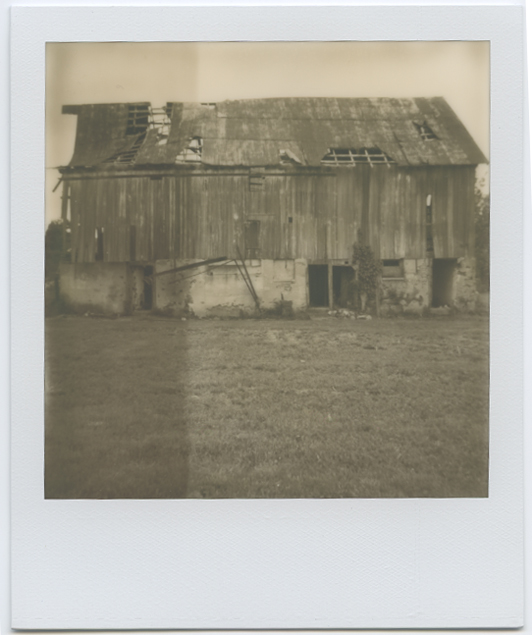 I attempted to make a duplicate of this image because I wasn’t happy with the how the right corner of the roof blurred and went out of the frame in the first photo. I was, however, careless and my hand slipped as the film came out of the camera. The result is the vertical striation. Interestingly, my wife likes this one better.
I attempted to make a duplicate of this image because I wasn’t happy with the how the right corner of the roof blurred and went out of the frame in the first photo. I was, however, careless and my hand slipped as the film came out of the camera. The result is the vertical striation. Interestingly, my wife likes this one better.
I also still blown away by the level of detail in these photos, especially considering the camera is so old and hadn’t been used for at least a decade. I particularly love the depth of the detail in, for example, 4th and 6th photos. In the 4th, the inner door and trees beyond are very clear even at this low resolution scan. In the 6th, through the inner window we can see the straps that wrap around a silo. The tones and shades are also quite impressive and compliment quite well the subject. Most gratifying, however, is working through making an effective image with new film and a new camera. Using a Polaroid is like working a complex puzzle (just like using toy cameras). There are so many factors involved in order to make an effective image beyond those that go into traditional composition. Thinking about the weather and the temperature. Calculating development times. Crafting little tools to help the image develop properly (we also see this using the Holga when I add portions of folded film boxes to ensure the film is taught and by wrapping the seams in gaffer’s tape). This is the joy of photographing with instant film and toy cameras.
And, there is never any end to the puzzles that one is confronted with. For example, consider the Polaroid Pronto! S. First challenge: there is no tripod mount. A little gaffer’s tape and whallah: a Pronto! attached quite soundly to my travel tripod (note the cardboard dangling from the front, as well):
Here are the photos made with the Pronto and PX 100 Silver Shade Film, taken at the exact same time as the above PX 600 successful images, in the order they were recorded:
 I suspect the dust is a result of dirty rollers, which I carelessly forgot to clean. The striations are as a result of not perfecting the process of covering the image as it comes out of the camera.
I suspect the dust is a result of dirty rollers, which I carelessly forgot to clean. The striations are as a result of not perfecting the process of covering the image as it comes out of the camera.
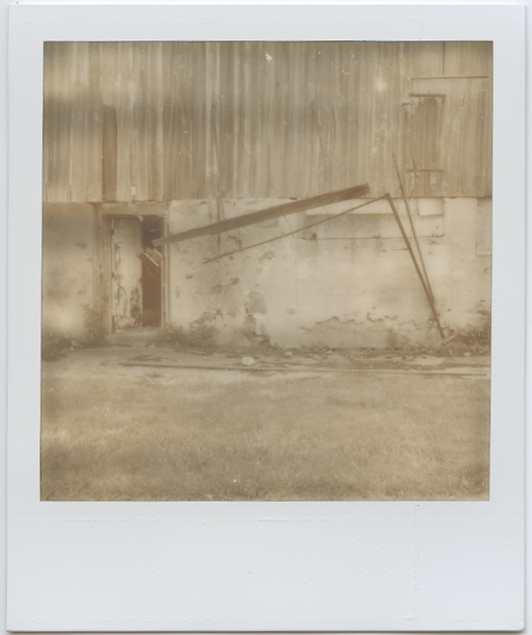 Here, more dust and some spots to the left. Not sure why those appear.
Here, more dust and some spots to the left. Not sure why those appear.
 It’s hard to tell on my screen, but the black areas in this image have turned red. I like the effect and wish I knew why it was happening so it could be replicated. The image could be a bit darker.
It’s hard to tell on my screen, but the black areas in this image have turned red. I like the effect and wish I knew why it was happening so it could be replicated. The image could be a bit darker.
 Again, some blotches on the left edge. Perhaps a light leak?
Again, some blotches on the left edge. Perhaps a light leak?
 Striations and blotches, the former a result of my hand slipping.
Striations and blotches, the former a result of my hand slipping.
So, lot’s to figure out with the Pronto!—though, my wife really likes these images. “They have an old feel to them,” she says. I didn’t use all the film because it was getting too dark and I was getting hungry. I’ll need to buy some new film and Dry Kits, though, because I totally love this film. It’s too bad I didn’t start using it early because these will be the only images of the barn before it is razed this weekend.
Comments (1) | Tags: 2335 mccoy, delaware, mccoy road, polaroid, polaroid impulse af, polaroid pronto s, px 100, px 600, px film, silver shade
Foggy Morning Shoot
April 23, 2011
On Wednesday, April, 20, 2011, I woke up and looked at the weather app on my iPhone (as I do every morning) and saw that it was foggy out. I had been waiting for a foggy day to get out early and take photos of the barn and landscape at 2335 McCoy Road in the fog. I leaped out of bed opened the blinds and, eureka, fog! I put Hydan in the cars eat and rushed out of the house to take some photos with a role from my new batch of Polaroid 100 Chocolate Giambarba Expired. The results were both surreal and unexpected. The Chocolate film is supposed to have a sepia tone to it, as in my other Chocolate Polaroid photos. Not this time it seems. The brownish tint is hinted at in the foreground, but the background and sky are a shade of pink. The pink got pinker as the images dried and the dark foregrounds got darker. I’m not sure if this is because the film sat out of the fridge for a week while we were in Boston or if its just a a symptom of the expired film or somehow due to the foggy conditions. Either way, I really enjoy how the fog makes the barn and the distant woods somewhat ephemeral and ghostly.
| Tags: 2335 mccoy, barn, delaware, film, grasses, landscape, mccoy, polaroid, rural decay, trees
Contact Sheets from 2335 McCoy Road Outings, March 2011
March 25, 2011
Below are 9 of 10 contact sheets from several March 2011 photo shoots of the barn, house, other buildings, and surrounding land at 2335 McCoy Road. The 10th sheet is too long to fit in the scanner (more on that later). Please ignore the poor quality of the scans; they were scanned in color on a HP all in one printer with a feeder that allows for quick, but poor quality scans.
These sheets contain photos taken with six different cameras. I couldn’t be more pleased with the results. They make me wonder why I would ever shoot digital again.
 Canon AE-1 with Fuji 100 Acros film, wide angle and zoom lenses
Canon AE-1 with Fuji 100 Acros film, wide angle and zoom lenses
I thought there had been something wrong with this camera but it turned out that I had two bad batteries in a row. Very happy to be back using it. Love this camera.
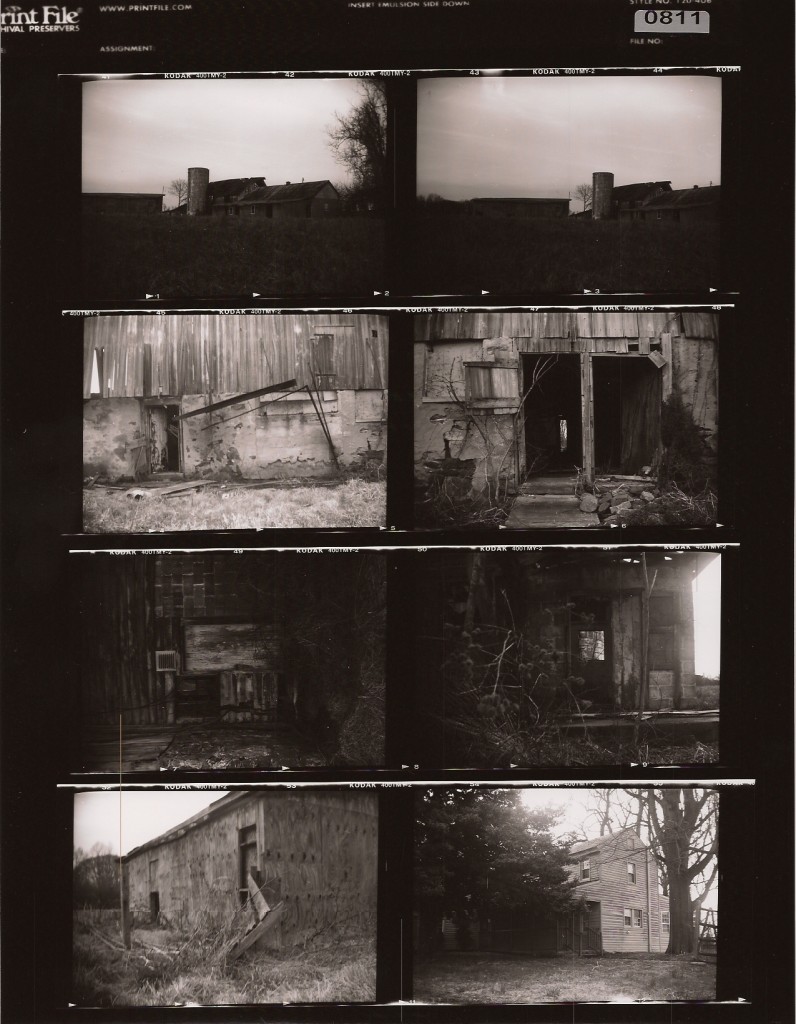 Kodak Target Six-Twenty Box Camera with Kodak 400-TMY on 620 rolls
Kodak Target Six-Twenty Box Camera with Kodak 400-TMY on 620 rolls
This roll and the below are the first photos I’ve taken with this box camera (or any box camera for that matter). This is a new favorite.
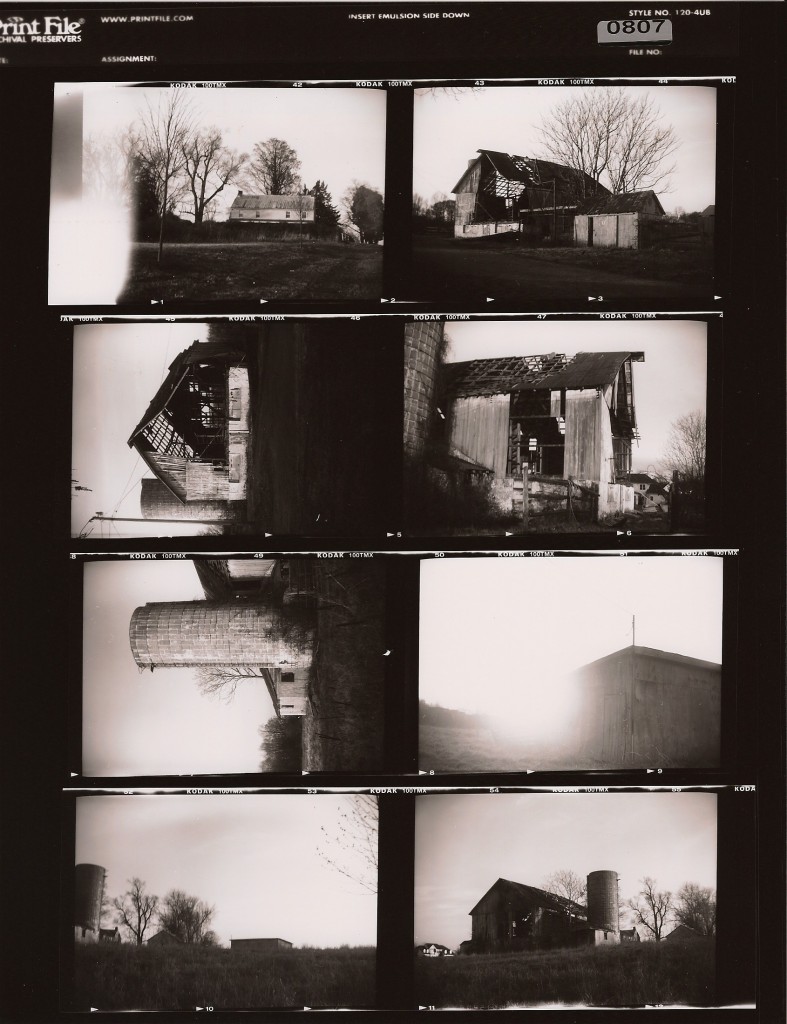 Kodak Target Six-Twenty Box Camera with Kodak 400-TMY on 620 rolls
Kodak Target Six-Twenty Box Camera with Kodak 400-TMY on 620 rolls
 Holga 120s with Kodak 400-TMY
Holga 120s with Kodak 400-TMY
The top two rows will be made into a composite image. Not really sure what happened with the bottom row.
 Holga 120WPC Wide Angle Pinhole with Kodak 400-TMY
Holga 120WPC Wide Angle Pinhole with Kodak 400-TMY
The below contact is a rescan of the vertical shot that is too light above.
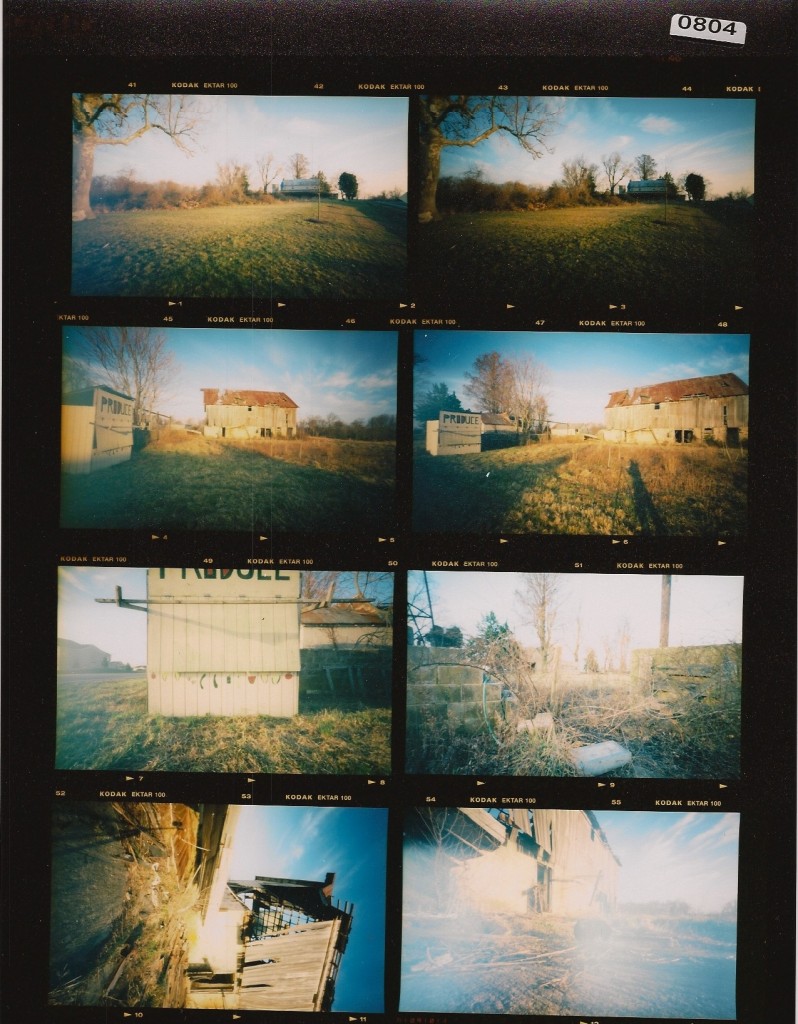 Holga 120WPC Wide Angle Pinhole with Kodak Extar 100
Holga 120WPC Wide Angle Pinhole with Kodak Extar 100
 Eastar 120 Twin Lens Reflex with Fuji Pro 400H
Eastar 120 Twin Lens Reflex with Fuji Pro 400H
 Happi Time Camera with Kodak Portra 160NC on 127 Rolls
Happi Time Camera with Kodak Portra 160NC on 127 Rolls
I’m just happy that any images came out. I had to tape the camera to the tripod and I wasn’t completely sure the shutter was working. Either I screwed up every other photo or I have twice the number of images per roll.
Golden Half Camera with Fuji 200
The winter images are from a January Ski trip to Stratton, VT.
Comments (4) | Tags: 2335 mccoy, canon, contact sheet, delaware, fuji, golden half, happi time, holga, holga pinhole, kodak, pinhole, target 620
taking out the polaroid 250 and expired film
March 17, 2011
With the beautiful barn down the street at 2335 McCoy Road, Bear, DE, soon to be restored (thankfully) I have been out as often as I can to photograph it. In the last few weeks the crazy strong winds have blown out the south-western wall resulting in the roof curving inward. The possibility of it falling any day has also expedited my desire to capture it on film. Plus, I’ve met the soon-to-be owners and they are quite happy with me photographing it. So, I’ve felt free to really take my time, wander all around it, and get to know it even more. My goal is to get as many photos on film as I can and use as many cameras as time allows. Along with my trusty Holgas I’ve taken out the Polaroid 250 I bought on eBay in May, 2010, along with Polaroid 100 Chocolate Giambarba Expired and Polaroid 664 Twin Giambarba Expired. My ultimate goal is for the photographs of the barn to make up my show at Colourworks in October. Here are six unedited samples with the Chocolate.
Update 3/18/11: Here are six unedited shots with the 664 Twin:
Comments (4) | Tags: barn, house, landscape, mccoy, polaroid 250
Call for Art & Writing to Commemorate Denim Day & Sexual Assault Awareness Month
March 16, 2011
My former student, Rene Youssef, who is now a Client Advocate, Services Empowering Rights of Victims (SERV), at the Center for Family Services in Glassboro, sent me the following email for a very worthy cause that I am more than happy to pass on:
Center for Family Services is sponsoring The Glasstown Arts District in Millville Third Friday event on April 15, 2011. This event is to commemorate Denim Day and Sexual Assault Awareness Month by bringing recognition to the issues surrounding sexual violence and its victims.
We would like to invite faculty, students, and community members to help raise awareness by contributing artistic and written works surrounding the issues of sexual violence. Art will be displayed and auctioned off for charity, and written works will be distributed during the event.
If you’re not aware of what Denim Day is (I wasn’t), from the Center’s Denim Day information sheet (.pdf):
In 1998, an Italian Supreme Court decision overturned a rape conviction because the victim wore jeans, reasoning she must have helped her attacker remove them. Enraged by the verdict, the women in the Italian Parliament launched into action and protested by wearing jeans to the steps of the Supreme Court. Wearing jeans became an international symbol of protest against erroneous and destructive attitudes about sexual assault. Denim Day was launched in the USA in 1999 in California as a prevention education campaign. Since then, states across the country have joined in this effffort. This year, New Jersey hosts its 2nd annual Denim Day on April 28th.
Please take a look at the Call For Artists (.pdf) and Call For Writers (.pdf) (Writer’s Submission Form [.doc] — if poetry or other genre, add it next to Fiction or Nonfiction) and I urge you to submit something to support these important causes.
I don’t think I have any photographs that fall within the guidelines, but I will be submitting the poem, “Cottonmill Lake,” which I wrote ages ago. I was never fully happy with the closing lines, nor was my professor, but I’m happy to have been able to update it this evening and am much more pleased with it.
Cottonmill Lake
Venus, below a crescent moon,
Peeked above a veil of icicled spruce
And white birch, their shadows veiling
Sensitive fern and creeper.
Canada Geese and white swans
Flew into the shadows
As we walked through our breath,
Followed our last-night footsteps
To a wooden bench
Damp with windblown snow.
When we’d walked past weeping willows,
Their branches trapped in the frozen water,
You told me about the couch, the ceiling,
The male baby-sitter. How
Out your window the moon cradled itself
Through a clouding sky.
| Tags: art, denim day, glasstown, philanthropy, poetry, sexual violence, writing
Billcliff Large Format Field Camera
March 09, 2011
On Tuesday, March 7, I picked up a new camera: a Billcliff large format wood camera with a Ross Rapid Symmetrical lens and one book-style plate holder that will take two exposures up to 8″ x 10″ in size.
I don’t know much about the camera or the lens other than what I have been able to find online in the last few days (update 3/13/11: and through contact with photography historian, Dr. Michael Pritchard, and the curator of Early Photography). Here is what I know. If you know more and/or have corrections, please share with a comment. I’m also sure that I’m not using the correct terms and names of the various parts, so please include those corrections, as well. My ultimate goals are to know the history of this camera and to be able to use it one day (soon).
Manufacturer
Joshua Billcliff (1820-1899) of Manchester, England
Update 3/30/11: Some digging around the Archives and Local Studies section of the Manchester Public Library web site led me to this portrait of Billcliff taken by J.F. Stirling on June 5, 1843 (used with permission):









